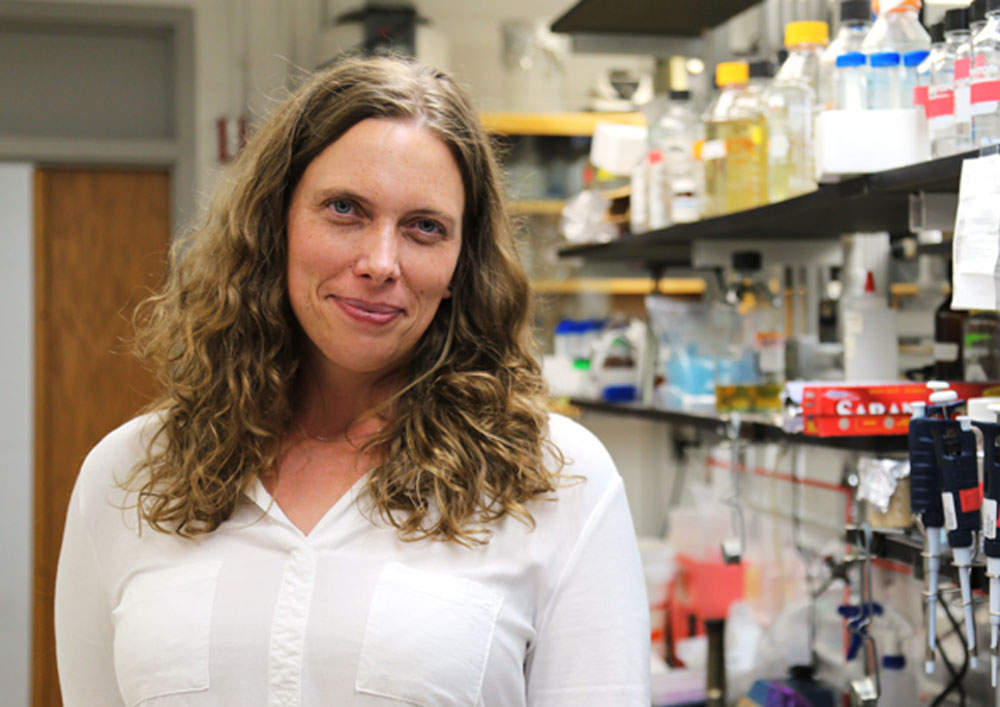Using microscopy to battle ‘microbial overlords’
From artist to microbiologist, Desirée Benefield has always been a very visual person. Before she was in graduate school studying the structure of bacterial toxins, Benefield was a glass blower.
“I was pleasantly surprised to see that there was a lot of overlap with the processes in the studio, with art or craft, and in a laboratory,” Benefield says. “I felt very much at home having these strange tools or instruments, complicated processes and evaluation of the work. It just came very naturally.”
While her tools may have changed, Benefield’s visual nature still plays out in her scientific research. As part of the virology lab at the Morgridge Institute for Research, Benefield is using electron microscopy to examine the specific interface of pathogens once they’re in a host cell. Electron microscopy is very fulfilling as an imaging technique in terms of the information you can get out of it, Benefield says. “The rapid output of visual information is so exciting, so rewarding.”
The lab, led by Howard Hughes Medical Institute (HHMI) Investigator Paul Ahlquist, studies several different classes of virus. Benefield will initially focus on positive-strand RNA viruses, the source of many serious infections.
“Desiree is a dynamic researcher and outstanding collaborator who will bring our critical molecular imaging studies to important new levels,” Ahlquist says. The research opportunity allows Benefield to work with two of her loves: pathogens and microscopes. She first gained an interest in pathogens during undergraduate courses in microbiology and immunology at the University of Tennessee at Chattanooga.
“It was like this epic battle between us and our microbial overlords on a day-to-day basis,” Benefield says. “I was fascinated by it. I knew this was where I wanted my emphasis to be.” During her graduate studies at Vanderbilt University, Benefield started doing crystallography of different proteins and bacterial toxins. When she was introduced to a collaborator that encouraged her to try electron microscopy, she never looked back.
Electron microscopy can be a powerful technique for addressing questions of protein and virus structures, and what’s happening when different pathogens are interacting with host cells, including human cells. Electron tomography, an extension of the traditional technique, captures very detailed 3D structures.
“Electron microscopy complements genetics, biochemistry and other approaches,” says Ahlquist. “It provides nanoscale images that strikingly reveal the architecture and subcellular context of the molecular machines that carry out biological processes.”
While the results are rewarding, Benefield says the technique definitely requires patience. “It’s not impossible by any means, and it’s a thrilling challenge,” Benefield says, “but it’s tricky. Just because you know how to do something doesn’t mean that your sample is going to cooperate or your microscope is going to cooperate.”
Nonetheless, the technique’s influence is starting to grow and Benefield, along with her fellow researchers, is looking forward to making it an even stronger force in the sciences.
“I’m very excited to see Morgridge and the University of Wisconsin ready to embrace this technique and push it further in terms of developing more biology-oriented electron microscopy work,” she says.



